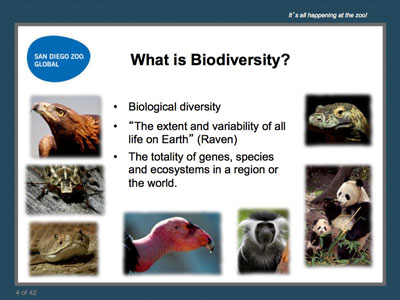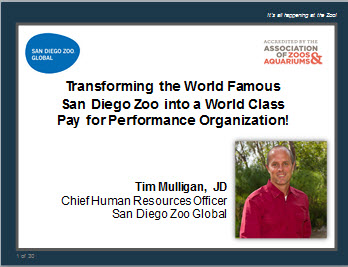 |
Technical Rescue—EMS Considerations: Part 1 |
1.00 |
Paramedic, and longtime EMS educator, Aaron Horowitz sits down with medical director, Jeremy Cushman. The thought-provoking discussion that ensues covers a wide range of technical rescues. We believe that much can be done to treat the sick and injured patient during a technical rescue of any type if you prepare for the incident. Many of these concepts you will want to discuss with fellow responders if you have not done so already.
Final Exam: This multiple choice exam is designed to test your knowledge of the material you just reviewed. You have two attempts to gain an 80% or higher on this exam. Please take your time and answer each question carefully. |
 |
COVID-19 Pandemic—EMS Documentation |
1.00 |
Paramedics Mark Philippy and Ben Sensenbach take time in the Spring of 2020 to discuss the documentation concerns that are associated with COVID-19. This in-depth discussion will lead most providers to the conclusion that they are already doing good work and it should continue. This discussion is strong enough to lead the same providers to think slightly differently about what is done during a pandemic period and they may decide to make minor alterations in what the way the document after EMS responses. Final Exam: This multiple-choice exam is designed to test your knowledge of the material you just reviewed. You have three attempts to gain an 80% or higher on this exam. Please take your time and answer each question carefully. |
 |
The Value of Biodiversity and its Link to Human Welfare |
1.00 |
Participants will explore the question: "What is the value of biodiversity?" We'll discuss biodiversity's value from intrinsic and utilitarian perspectives and discuss why saving Earth's species is a critically important matter for all humans. The personal link between biodiversity and human wellbeing has been demonstrated in numerous studies, a compelling body of research that we'll discuss here. Lastly we'll discuss the current plight of global biodiversity and how we can each personally help to alleviate threats. |
 |
Pay for Performance |
1.00 |
Pay-for-Performance continues to be a major challenge for the majority of organizations as they try to find ways to make these programs meaningful to employees . Four years ago, the San Diego Zoo was struggling with how to best measure performance, manage goals and transform the organization into a pay-for-performance driven culture. Under the leadership of Tim Mulligan, the San Diego Zoo implemented a complete overhaul of its employee performance and talent management processes and systems, including appraisals and pay-for-performance. The end result was complete transformation of the Zoo's culture. Now the organization's more than 3,000 employees have clear goals and a link between day to day performance and their compensation which has resulted in greater accountability, increased productivity and higher employee morale. |
 |
Penguins |
2.00 |
Penguins delight and fascinate zoo visitors, but there's more to these ocean-dwelling birds than meets the eye. From Antarctica to the equator, birds in the order Spheniscidae have adapted to a unique existence that is tied to the land and to the sea. |
 |
Coaching: Coaching Diverse Employees (Instructor Guide) |
1.34 |
People are different. Beliefs, behavior, learning pace, and personality vary from person to person. Some employees require extensive support to complete a project, while others perform better with fewer guidelines and more control. Still other employees need constant motivation to keep them focused on achieving goals.
As a coach, you must assess each employee’s situation, and determine the most effective coaching approach to implement. This versatility will help you recognize your employees’ needs, improve your communication skills, and make you a better coach.
In this course you will learn to: motivate employees by identifying their individual personality types, and build trusting relationships between employees and their coaches.
This Instructor's Edition of this course includes notes and suggestions to assist you in presenting the material, whether in an in-person classroom setting or as an instructor-led online or distance-learning course. It also provides you with the answers to questions found in mid-lesson activities, as well as in the quiz that concludes the course. |
 |
Coaching: Coaching Diverse Employees |
1.34 |
People are different. Beliefs, behavior, learning pace, and personality vary from person to person. Some employees require extensive support to complete a project, while others perform better with fewer guidelines and more control. Still other employees need constant motivation to keep them focused on achieving goals.
As a coach, you must assess each employee’s situation, and determine the most effective coaching approach to implement. This versatility will help you recognize your employees’ needs, improve your communication skills, and make you a better coach.
In this course you will learn to: motivate employees by identifying their individual personality types, and build trusting relationships between employees and their coaches. |
 |
Managing Performance: Performance Management Basics |
1.00 |
Performance management is a process that allows for ongoing communication between employees and managers that results in employees striving for, and reaching, their potential.
In this course you will learn to: define performance management and identify its common pitfalls, understand the importance of creating a performance management plan and the steps involved in establishing a plan, and identify the process for discussing and creating an effective job description. |
 |
Outdoor Personal Protective Equipment (PPE) |
0.50 |
Personal protective equipment, commonly referred to as “PPE,” is equipment worn to minimize exposure to various hazards. Examples of PPE include gloves, foot, and eye protection, protective hearing devices (earplugs, muffs), hard hats, respirators, and full-body suits. This course covers protecting yourself from hazardous work-related activities with Personal Protective Equipment. |
 |
Course 29: Making Plans and Developing Policies |
2.00 |
Planning and policy-making are closely linked to the development of quality OST programs. When OST staff are skilled as planners and policy-makers, they can use these skills to design and implement high quality programs that benefit children, youth, and families. It is essential for OST professionals to recognize that it is important for policies to grow out of a vision of quality and a mission that supports that vision. Therefore, creating a vision for quality, developing a program philosophy, and writing a clear mission statement are the first steps in program planning. It is also important for OST professionals to use a systematic process to develop goals and objectives, set priorities for accomplishing goals and objectives, and develop goal-based action plans that will help the OST program achieve its mission. High quality OST programs are led by professionals who understand how to use effective strategies for creating a continuous cycle of planning and evaluation that supports ongoing program improvement. |











